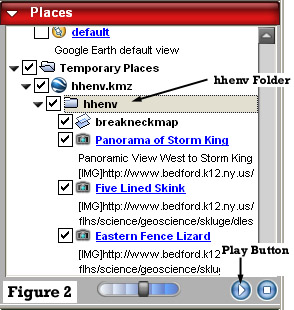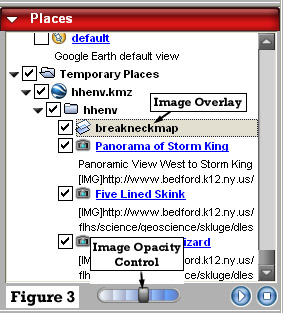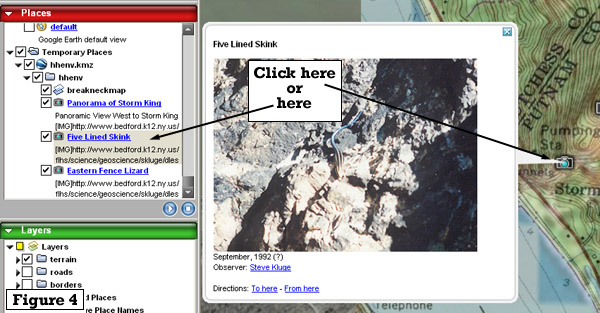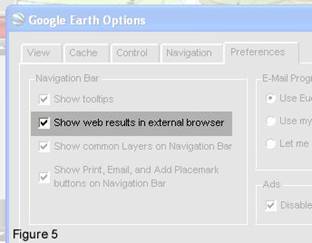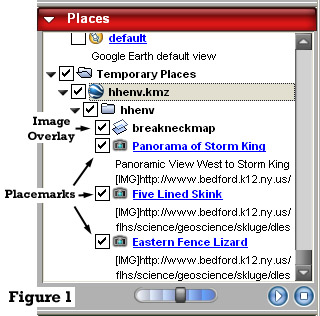
· The file will automatically open in Google Earth (you may be prompted to approve that action…).
· The file will be downloaded to your hard drive, and will have to be opened with a double click from there.
Take a look at the Temporary Places folder that is displayed in Google Earth (Figure 1). Notice that a file called hhenv.kmz is displayed, and within that file is a folder called hhenv.kmz. Within that folder are an image overlay called breakneckmap, and 3 placemarks (identified by a small camera, indicating that these placemarks contain photos) called, “Panorama of Storm King”, “Five Lined Skink” and “Eastern Fence Lizard”
